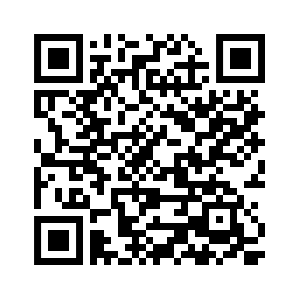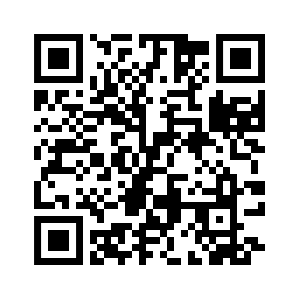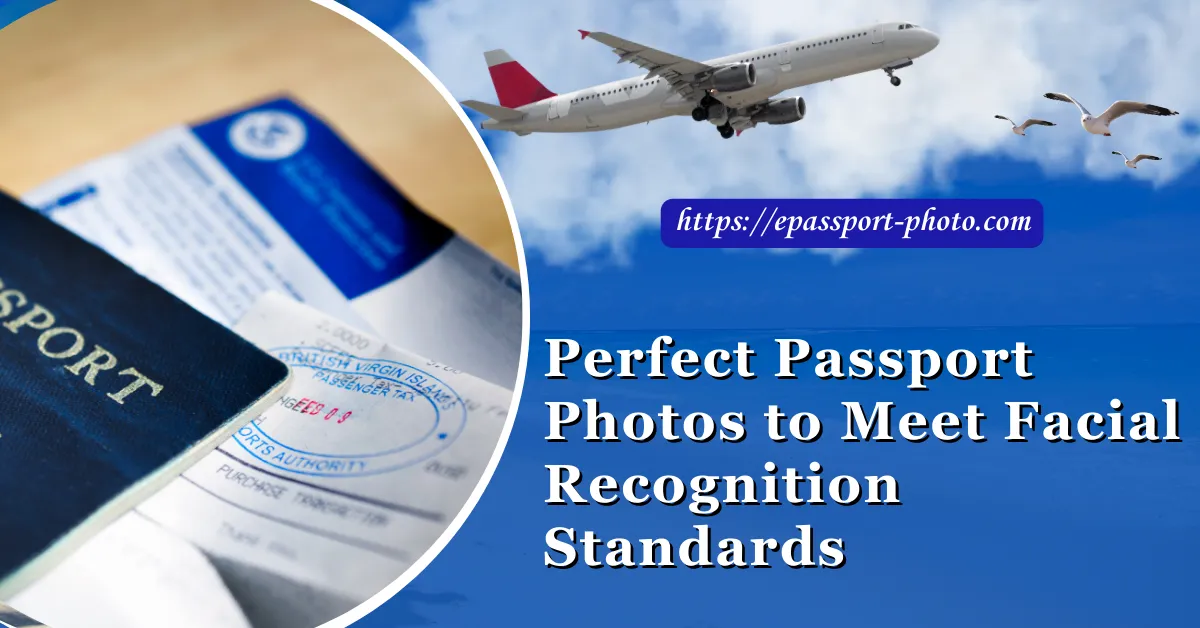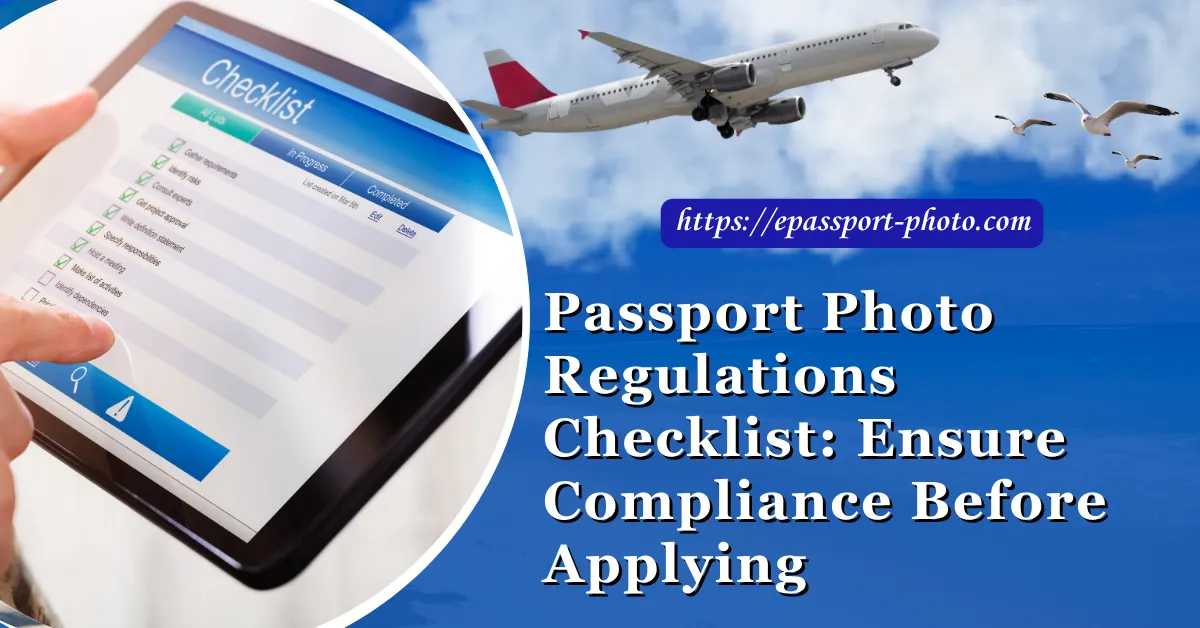A professional headshot may have been taken by some individuals to save time and money while applying for a new passport or who want to replace the passport photo. A headshot may also be used by some of them as their passport photo straight away. Now, a question may arise, whether headshots are appropriate and compliant for passport photos. The goal of this post is to provide readers with a thorough grasp of the differences between professional headshots and passport-style photos.
Passport Style Photo Overview
A. Definition and Standard Dimensions
A passport-style photo, characterized by its standardized format, is a head-and-shoulders image capturing a clear and unobstructed view of the face. The dimensions typically adhere to international standards, ensuring uniformity across various identification documents. These dimensions, often around 2 x 2 inches or 35 x 45 millimeters, are designed to meet the specifications set by passport and visa authorities worldwide.
B. Common Use Cases of Passport Photo
Visa Applications: Passport-style photos are a prerequisite for visa applications, serving as a crucial element in the documentation process. Consistency in these photos is paramount, with authorities requiring recent, unaltered images to accurately represent the visa applicant.
Official Documents: Beyond visas, and passport-style photos find applications in a myriad of official documents. From driver's licenses to government-issued identification cards, these photos play a pivotal role in establishing an individual's identity in the eyes of legal and administrative entities.
Identification Cards: Whether it's a national ID card or a membership card, passport-style photos contribute to the standardization of identification. The concise, straightforward nature of these photos ensures easy recognition and authentication.
C. Limitations of Passport Style Photos
While passport-style photos excel in fulfilling their designated purposes, they come with inherent limitations. The rigid composition requirements, including a neutral facial expression and a specific background, can result in images that lack personal expression. Moreover, the emphasis on standardization limits the creative elements that can be infused into these photos, making them less suitable for contexts where a more nuanced portrayal is desired.
Professional Headshot Overview
A. Definition and Recommended Dimensions
A professional headshot is a carefully composed photograph that goes beyond the standardized constraints of passport-style photos. Typically featuring the head and shoulders, professional headshots aim to capture the individual's personality and professional demeanor. While dimensions may vary, a common guideline is often around 8 x 10 inches, allowing for a more detailed portrayal while maintaining a focus on the subject's face.
B. Primary Use in Professional Settings
LinkedIn Profiles: In the digital age, a compelling LinkedIn profile is a gateway to professional opportunities. A well-crafted professional headshot serves as the first impression, communicating not just a face but also the individual's approachability and professionalism. It enhances the visual appeal of the profile, making it more likely to catch the eye of potential employers, collaborators, or clients.
Resumes: Integrating a professional headshot into a resume adds a personal touch to the document. It humanizes the professional experience, providing recruiters and hiring managers with a visual connection to the candidate. This personalization can set candidates apart in competitive job markets, helping them stand out in the recruitment process.
Business Websites: From executive bios to team pages, professional headshots are a staple on business websites. They contribute to the company's branding by putting a face to the names behind the organization. This not only fosters a sense of familiarity but also establishes a more personal connection with clients, partners, and stakeholders.
C. Impact on Professional Networks and Opportunities
The influence of a professional headshot extends beyond mere aesthetics. It can significantly impact an individual's professional networks and opportunities. A thoughtfully crafted headshot can convey confidence, approachability, and competence, qualities highly valued in the professional realm. It serves as a visual representation of one's brand, influencing how others perceive and engage with the individual.
Passport Style Photo vs. Professional Headshot Key DifferencesÂ
A. Technical Specifications
Size and Dimensions of Passport Style Photos
Passport-style photos adhere to specific size and dimension standards, crucial for the universal acceptance of identification documents. US passport photo size is required to be exactly 2 x 2 inches or 35 x 45 millimeters. The subject's face must be the primary focus, with specific guidelines on head size and placement. A neutral expression and a clear, unobstructed view of facial features are integral to meeting the technical specifications set by the US Department of State.
 Standard Specifications for Professional HeadshotsÂ
Professional headshots, while more flexible than passport photos, also have recommended standards. A typical dimension is around 8 x 10 inches, allowing for a detailed portrayal of the individual while maintaining a focus on the face. The background, lighting, and framing contribute to the technical aspects, aiming to capture the subject professionally and engagingly. The goal is to create an image that reflects the individual's personality and professional brand.
Importance of Meeting Specific Requirements
Meeting the technical specifications for both passport-style photos and professional headshots is paramount for different reasons. In the case of passport photos, compliance ensures seamless acceptance in the identification and visa processes. Deviating from the stipulated guidelines may result in rejection or complications during official procedures.
B. Aesthetics and Composition
Composition Rules for Passport Style Photos
Passport-style photos, designed for identification purposes, follow specific composition rules to ensure consistency and accuracy. The subject is typically centered within the frame, with a neutral facial expression and both eyes open. The background is uniform and plain, avoiding any distracting elements. These stringent guidelines aim to create a standardized, easily recognizable image for official documentation. While creativity is limited, adherence to these composition rules ensures the primary focus remains on the individual's facial features.
Aesthetically Pleasing Elements in Professional Headshots
Professional headshots, in contrast, offer a canvas for creativity and expression. Composition rules for headshots are more flexible, allowing for a range of aesthetically pleasing elements. The rule of thirds is often applied, placing the subject off-center to create a dynamic and engaging image. Backgrounds may vary, offering an opportunity to incorporate elements that complement the individual's profession or personality. Creative lighting, varied poses, and expressions contribute to a more visually appealing and expressive result.
Impact of Composition on the Overall Impression
The composition of a photograph plays a crucial role in shaping the overall impression it conveys. In passport-style photos, adherence to strict guidelines ensures a standardized and reliable representation for identification purposes. However, the limited scope for creativity may result in a more impersonal and formal impression.
Also Explore:Â Creating a Passport Size Photo from a Normal Photo
C. Wardrobe and Styling
Dress Code Considerations for Passport Style Photos
For a passport-style photo, subjects must wear clothing with contrasting colors to the background, ensuring clear delineation. Solid, subdued colors are recommended to avoid distraction, and individuals are often advised to refrain from wearing accessories that could obscure facial features. The emphasis is on a clean, simple look that facilitates easy identification without conveying a specific personal style.
Professional Attire and Grooming for Headshots
Professional headshots, being more versatile, allow for a broader range of wardrobe choices while still maintaining a polished and business-appropriate appearance. The attire should align with the individual's professional context and personal brand. Formal business attire is often recommended for corporate environments, while creative professionals may have more flexibility to showcase their style. Grooming is equally important, with attention to hair, makeup, and overall presentation contributing to a polished and professional look.
Conveying the Right Image through Clothing and Style
The choice of clothing and style in both passport-style photos and professional headshots is a strategic decision that communicates a particular image. Passport photos aim for a neutral, standardized appearance, ensuring the focus remains on facial features for identification purposes. In contrast, professional headshots provide an opportunity to convey personality, professionalism, and approachability through clothing and style choices.
D. Background Choices
Neutral Backgrounds in Passport-Style Photos
Passport-style photos are characterized by their adherence to neutrality, extending to the background choice. Standardized guidelines often dictate a plain and neutral backdrop, usually white or light-colored. This intentional lack of distraction serves a practical purpose, ensuring the focus remains solely on the individual's facial features for accurate identification. The neutrality of the background contributes to the universal acceptance of passport photos across various official documents.
Importance of Background Selection in Headshots
In professional headshots, the choice of background takes on a more dynamic role. The background sets the tone for the image, influencing the overall mood and perception. While some opt for clean and simple backgrounds for a classic and professional look, others may choose more elaborate settings to convey aspects of their personality or profession. The selection of an appropriate background in headshots is a deliberate decision and contributes to the narrative the image seeks to communicate.
Enhancing Visual Appeal with Appropriate Backgrounds
The background in a photograph, whether a passport-style photo or a professional headshot, plays a pivotal role in enhancing visual appeal. In passport photos, the neutral background ensures a standardized and unobtrusive representation. In headshots, however, the background becomes a canvas for creative expression. Thoughtful background choices can complement the subject's attire, profession, or personal brand, adding depth and interest to the image.
Might Be Interested:Â How to Capture Ideal Baby Passport Photos?
E. Lighting Techniques
Basic Lighting Setups for Passport Style Photos
Passport-style photos often employ straightforward and uniform lighting setups to achieve consistent and reliable results. Soft, diffused lighting is preferred to minimize harsh shadows and create an evenly lit image. Frontal lighting, where the light source is positioned directly in front of the subject, ensures clarity and visibility of facial features without introducing unnecessary complexity. The goal of passport photo lighting is to maintain a natural and unembellished representation, emphasizing the subject's identity for identification purposes.
Professional Lighting Techniques for Headshots
In contrast, professional headshots benefit from more intricate lighting techniques that aim to enhance the subject's features while creating depth and dimension. Common setups include three-point lighting, which involves a key light, a fill light, and a backlight. The key light illuminates the main areas of the face, the fill light softens shadows, and the backlight adds separation from the background. This approach adds a level of sophistication to the image, emphasizing professionalism and providing a more visually appealing result.
Achieving a Flattering and Professional Look with LightingÂ
Achieving a flattering and professional look through lighting is a nuanced process that requires consideration of the subject's facial features and the intended mood of the photograph. While passport-style photos benefit from simplicity and uniformity, professional headshots leverage lighting to sculpt the face and convey a sense of personality. The interplay of light and shadow can accentuate positive attributes, create a pleasing atmosphere, and contribute to the overall visual appeal.
F. Facial Expressions and Poses
Guidelines for Neutral Expressions in Passport Photos
Passport photos adhere to strict guidelines regarding facial expressions, favoring neutrality and a straightforward demeanor. Subjects are typically instructed to maintain a neutral expression with both eyes open, ensuring a clear and unobstructed view of the face. The aim is to create an image that is universally recognizable and does not convey specific emotions. This standardized approach facilitates accurate identification, emphasizing the functional rather than expressive aspect of the photograph.
 Conveying Confidence and Approachability in Headshots
Professional headshots offer a departure from the neutral expressions of passport photos, encouraging individuals to convey confidence and approachability. A slight, controlled smile is often recommended to add warmth and friendliness to the image. The eyes play a crucial role in headshots, conveying a sense of engagement and authenticity. The goal is to create a connection with the viewer, showcasing the subject's personality and professionalism. Expressive facial features contribute to a more dynamic and engaging portrayal.
Role of Poses in Creating a Professional Demeanor
Poses play a significant role in creating a professional demeanor in both passport photos and headshots. Passport photos typically feature straightforward, centered poses that adhere to identification standards. In headshots, the range of acceptable poses expands, allowing for a more personalized representation. Individuals can experiment with angles and body language to convey authority, approachability, or creativity, depending on the context of the photograph. Thoughtful posing contributes to the overall narrative of the image, shaping the viewer's perception.
G. Editing and Retouching
Acceptable Edits For Passport Style Photos
Passport-style photos typically adhere to minimal editing standards to ensure a true and accurate representation. Acceptable edits include adjustments to brightness, contrast, and color balance aimed at achieving a clear and natural depiction of the subject. However, extensive retouching or alterations that significantly modify the individual's appearance are generally discouraged. The emphasis is on authenticity and ensuring that the photo aligns with the individual's true likeness for identification purposes.
Professional Retouching Standards for Headshots
Professional headshots regularly go through careful retouching to improve visual appeal while keeping authenticity intact. Usual retouching techniques involve smoothing skin, taking out imperfections, and adjusting color to reach a polished and professional appearance. The aim is to show the person in the best light possible without altering their natural characteristics. Professional retouching norms emphasize subtlety, guaranteeing the result continues to depict the person.
Balancing Authenticity and Enhancement in Editing
The key to editing both passport-style photos and headshots lies in striking a balance between authenticity and enhancement. While passport photos require minimal editing to preserve accuracy, headshots allow for a more creative and polished approach. It's crucial to avoid over-editing that may result in an unrealistic or overly perfected appearance. Balancing authenticity ensures that the edited image still reflects the genuine character and features of the individual, even as enhancements contribute to a visually pleasing and professional result.
H. Printing Considerations
Printing Requirements for Passport Size Photos
Passport-size photos adhere to specific printing requirements dictated by official standards. The dimensions, typically for the American passport photo are 2 x 2 inches or 35 x 45 millimeters and need to maintain to ensure compatibility with identification documents. High-quality, matte photo paper is commonly recommended for printing passport photos, and the print must accurately represent the details captured in the photograph. Precision in printing is crucial for the seamless acceptance of the photo in official processes.
Professional Printing Options for Headshots
Professional headshots benefit from a broader range of printing options, allowing for customization based on the intended use. High-resolution printing on quality paper is essential to convey the professionalism and attention to detail reflected in the photograph. Depending on the purposeâbe it inclusion in a portfolio, business card, or promotional materialâvarious finishes, such as glossy or matte, can be selected. Professional printing services offer the flexibility to tailor the final output to the specific needs of the individual or organization.
Ensuring Quality and Accuracy in the Final Output
Regardless of the type of photograph, ensuring quality and accuracy in the final output is paramount. For passport photos, precision in printing is necessary to meet official standards and facilitate the smooth processing of identification documents. Professional headshots, being a representation of an individual's brand, demand meticulous attention to detail in printing. Color accuracy, sharpness, and appropriate paper selection contribute to the overall quality of the final output.
Read More:Â Take Free Chinese Passport Photo at Home
 I. Branding and Identity
Passport Photos as Identifiers
Passport photos primarily serve as identifiers, capturing a standardized representation of official documents. They play a crucial role in establishing and verifying one's identity for legal and administrative purposes. While passport photos lack personalization and creative expression, they serve as functional tools in the identification process, emphasizing uniformity and consistency across various documents.
Professional Headshots as a Tool for Personal Branding
Professional headshots, on the other hand, transcend the functional aspects of identification, serving as powerful tools for personal branding. These photographs provide an opportunity for individuals to shape how they are perceived in professional contexts. From LinkedIn profiles to business websites, professional headshots contribute to the narrative of personal brand identity. Through careful consideration of wardrobe, poses, and expressions, individuals can convey their values, professionalism, and approachability, thereby influencing how they are perceived by peers, clients, and collaborators.
Aligning Visual Representation with Personal or Corporate Identity
Whether through passport photos or professional headshots, aligning visual representation with personal or corporate identity is a strategic endeavor. Passport photos align with the standardized identity requirements set by official bodies. In contrast, professional headshots offer a canvas for individuals to showcase their unique identity or contribute to a corporate brand. The alignment involves thoughtful choices in attire, background, and overall presentation to convey a cohesive and authentic representation of the individual or organization.
J. Photography Equipment
There may seem like a pattern to you: headshots are exempt from certain rules, but passport photos are. However, when it comes to the photography equipment, things become a little more laid back. Any device that satisfies the minimal technological requirements can be used to shoot both passport photos and headshots. For either kind of image, digital cameras, DSLRs used by photographers, and smartphones can all be utilized. Even though it's not advised to take selfies for any kind of picture.
K. Cost and Accessibility
Affordability of Passport Style Photos
Passport-style photos are widely known for their affordability and accessibility. Typically, these photos are produced at a low cost, making them accessible to a broad range of individuals requiring official identification. Many local photo studios, kiosks, or even automated machines in public spaces offer convenient and budget-friendly options for obtaining passport photos. The emphasis is on efficiency and meeting standardized requirements, making this option highly accessible for those in need of official documentation.
Professional Headshots: Investment in Career Branding
Contrastingly, professional headshots are recognized as an investment in career branding. While the cost may be higher compared to passport photos, the value lies in the potential return on investment for an individual's career or business. Professional headshots contribute to the visual narrative of personal branding, making them an essential tool for those keen on presenting a polished and professional image in the competitive landscape. The investment in a high-quality headshot can pay dividends in networking, job searches, and overall career advancement.
 Did You Know: Top 10 Best Locations for Passport Photos Near Me in the USA
Conclusion
This article explains the meaning and distinctions between professional headshots and passport photos. Passports and professional headshots will continue to be essential for the profession and daily living as we advance further into the digital era. In addition to serving as a passport photo qualification document, it is also a means of obtaining international travel authorization.
Furthermore, professional headshots are a crucial instrument for showcasing your individuality. Investing in high-quality headshots may significantly enhance your personal brand and professional image, regardless of your professionâcorporate, acting, modeling, or just yourself online. This is something we cannot afford to underestimate.
Related Articles
FAQs
How often should professional headshots be updated?
It's recommended to update headshots every 2-3 years or when you significantly change your hairstyle or hair color. Annual updates are common if you use them actively for professional purposes.
Can I use a passport photo for professional purposes?
Not recommended. Passport photos have different requirements focused on ID verification. Professional headshots should have a pleasing background, attire, lighting, and pose.
What should be the background color for a professional headshot?
Solid neutral tones work best - grey, white, light blue. Avoid busy patterns or black backgrounds. The focus should be on you instead of the background.
Are there specific dress code requirements for passport photos?
Conservative attire in solid colors. No white tops which can wash out facial features. Shoulders and neckline must be visible.
Can you smile in a US passport photo?
No, facial expression should be neutral with mouth closed. Avoid smiling which exposes teeth.
Is a headshot photo the same as a passport photo?
Headshots are more flexible for posting and editing. They showcase personality and aim to look flattering. Passport photos focus on neutral depiction for identification only.
Can I edit my passport-size photo before submission?
Minimal editing is allowed, such as cropping and basic color correction. Avoid editing facial features, expressions, and lighting that would alter appearance significantly.
Do professional headshots make a difference in job applications?
Yes, they project a polished, confident image and often lead to more positive impressions and callbacks from potential employers.
How can lighting affect the outcome of a passport photo?
Should be uniform without shadows or overexposure. Side lighting can alter facial structure while overhead can cast shadows. Diffused frontal lighting works best.
Are there any cultural considerations in passport photo attire?
Religious headwear is allowed if worn daily. Clothing should not display military or police uniforms, political statements, or suggest criminal affiliation. Showing forehead/hairline is encouraged when possible.
What are the acceptable poses for a passport-size photo?
Acceptable poses for passport photos:
Facing the camera directly with a neutral expression. No smiling or raised eyebrows.
The head must be bare unless worn for religious purposes.
Eyes must be visible and open. Glasses are not allowed in passport photos.
Shoulders must be square to the camera.




![Passport Style Photo vs. Professional Headshot [Key Differences]](https://epassport-photo.com/storage/blog-feature-images/passport-style-photo-vs-professional-headshot.webp)


